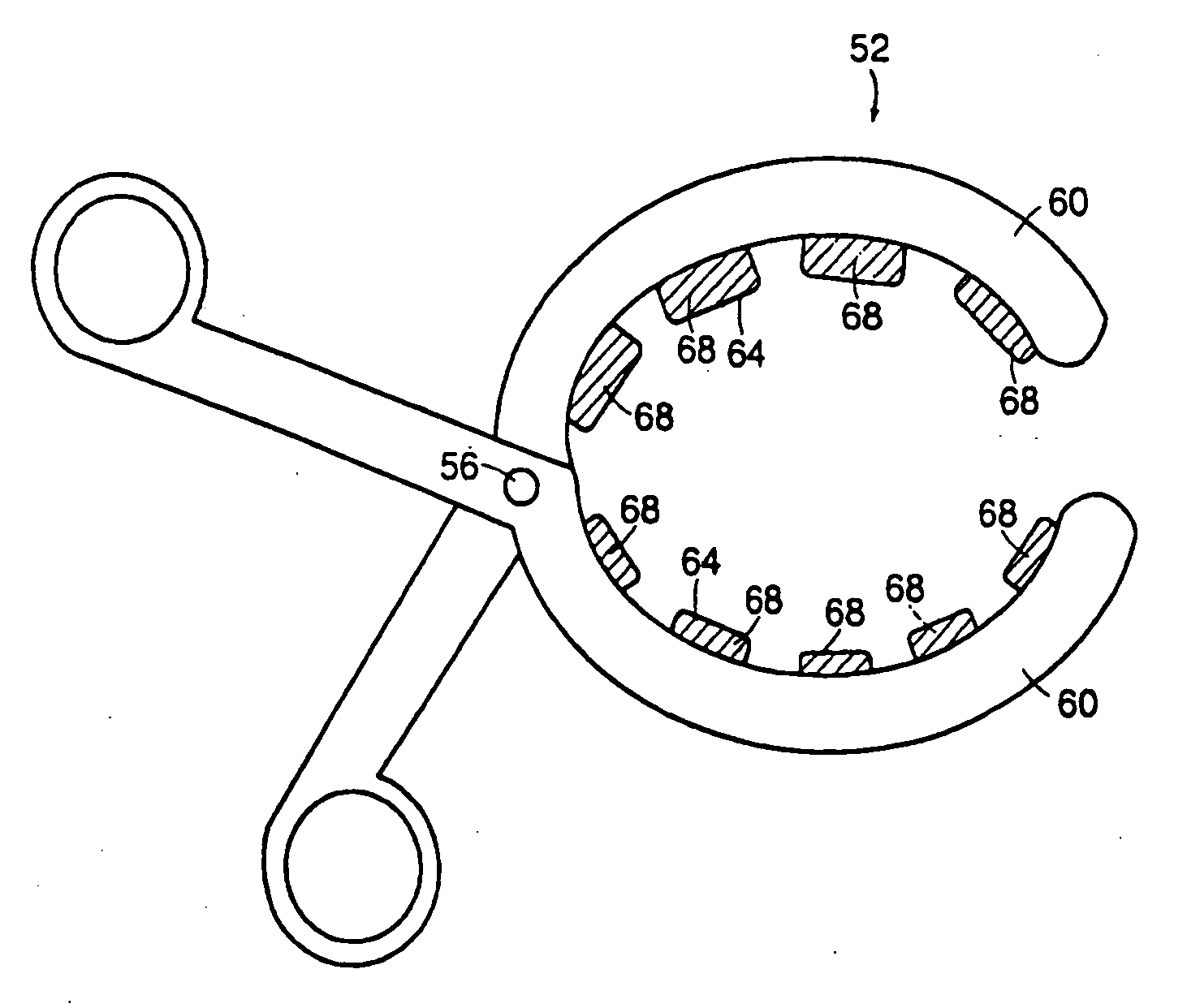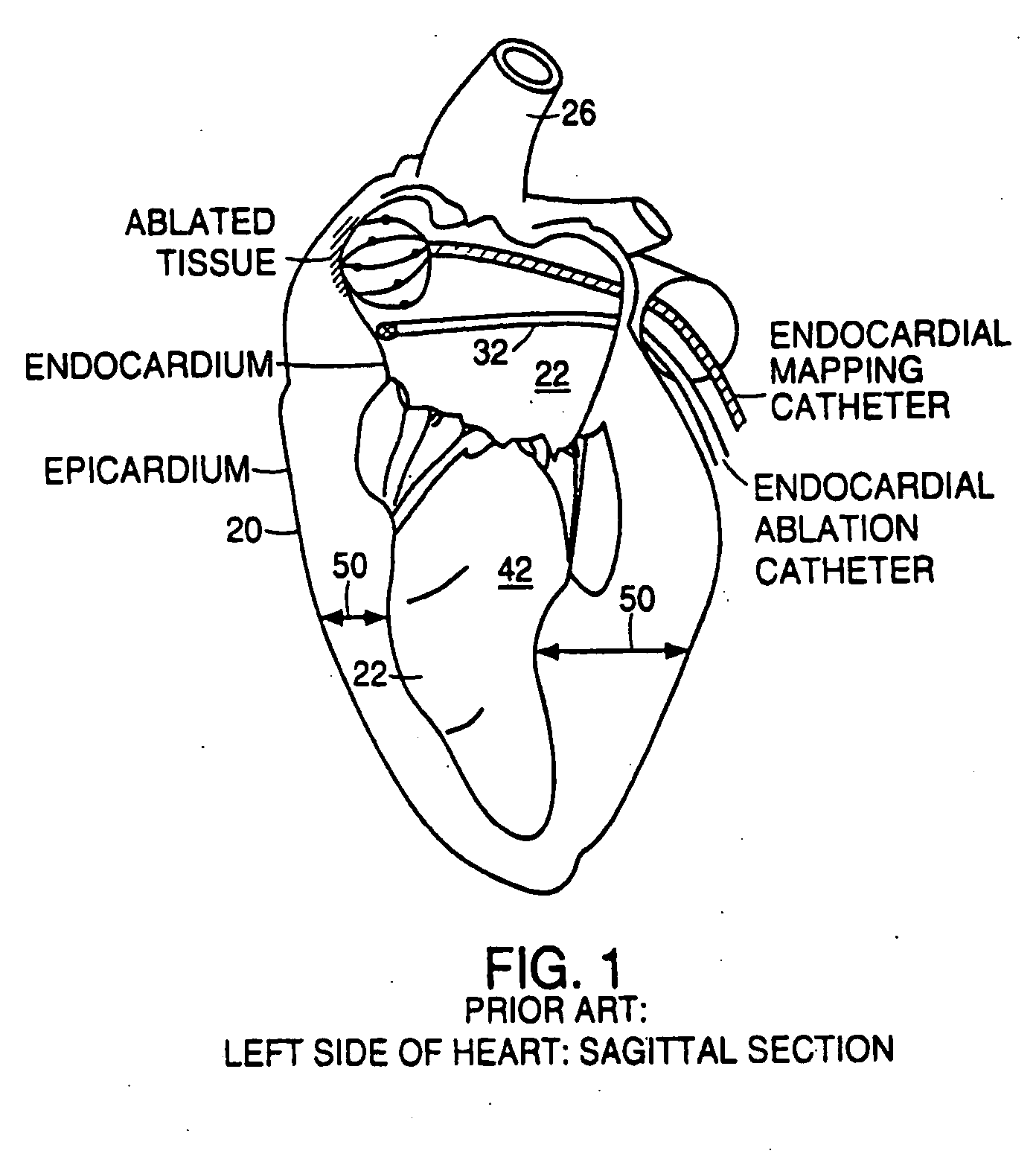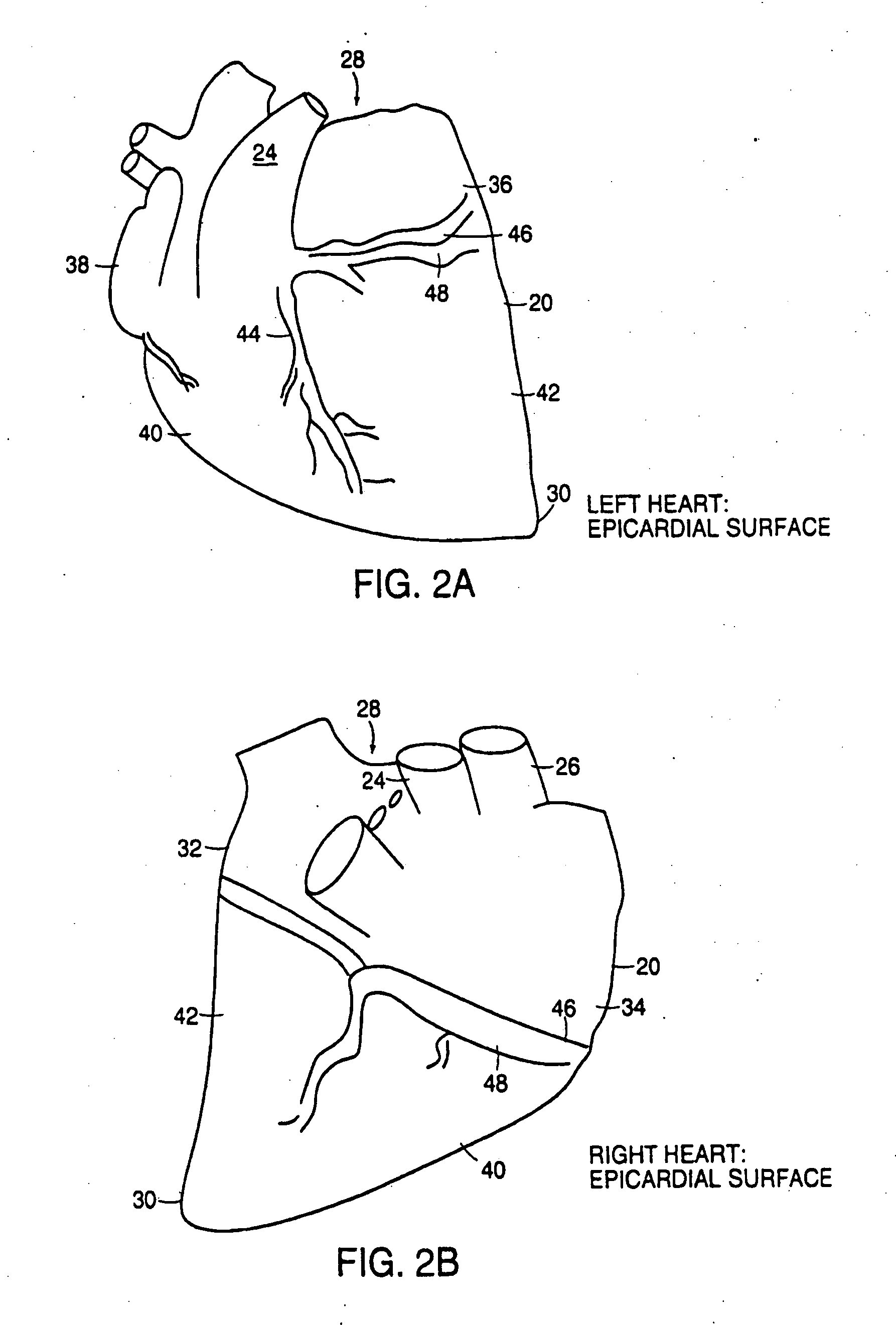Cardiac ablation system and method for treatment of cardiac arrhthmias and transmyocardial revascularization
a technology of ablation system and transmyocardial revascularization, which is applied in the field of cardiac ablation system and method for treating cardiac arrhthmias and transmyocardial revascularization, can solve the problems of cardiac arrhythmia, rapid, uncontrolled, ineffective heart beating, and sudden cardiac death
- Summary
- Abstract
- Description
- Claims
- Application Information
AI Technical Summary
Benefits of technology
Problems solved by technology
Method used
Image
Examples
Embodiment Construction
[0056] The heart as shown in FIG. 1 has at least two surfaces, an outer surface, the epicardium 20, and an inner surface, the endocardium 22. Numerous cardiac structures are identifiable on the epicardial surface 20. For example, as illustrated in FIGS. 2A and B, the pulmonary artery 24 and aorta 26 exit from the epicardial surface 20 at the base 28 of the heart. The apex 30 of the heart is the pointed end of the heart opposite the base 28 of the heart. The left atrium 32 and right atrium 34 are readily identifiable by the left 36 and right 38 auricles. The right ventricle 40 and left ventricle 42 are localized by identifying the left longitudinal groove 44 which runs from approximately the heart base 28 to apex 30 on the epicardial surface 20. The coronary groove 46 on the epicardial surface 20 separates the cardiac atria 32, 34 from the cardiac ventricles 42, 40. The great coronary vessels 48 are disposed in the coronary groove 46.
[0057] The endocardium 22 lines the inside walls ...
PUM
 Login to View More
Login to View More Abstract
Description
Claims
Application Information
 Login to View More
Login to View More - R&D
- Intellectual Property
- Life Sciences
- Materials
- Tech Scout
- Unparalleled Data Quality
- Higher Quality Content
- 60% Fewer Hallucinations
Browse by: Latest US Patents, China's latest patents, Technical Efficacy Thesaurus, Application Domain, Technology Topic, Popular Technical Reports.
© 2025 PatSnap. All rights reserved.Legal|Privacy policy|Modern Slavery Act Transparency Statement|Sitemap|About US| Contact US: help@patsnap.com



